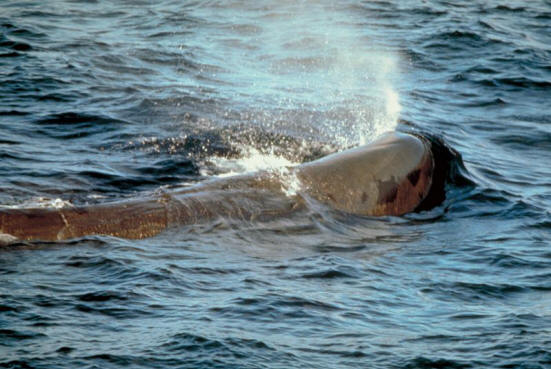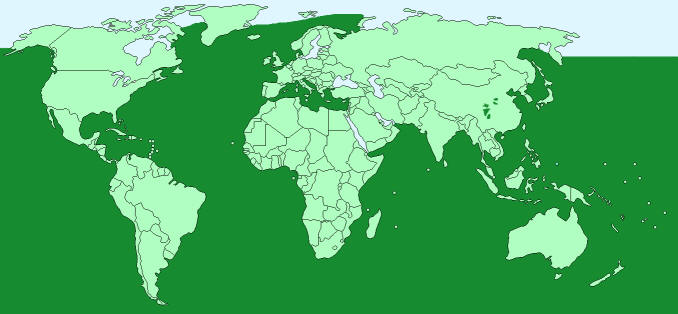Sperm Whale

Scientific Name -Physeter macrocephalus
Classification – Cetaceans
Gender Names – Male – bull; Female – cow; baby – calf
Collective Noun – Pod
Average Length – Male – 16 m (52 ft) Female – 11 m (36 ft) Newborn – 4 m (13 ft)
Average Weight – Male – 41,000kg (45 tons) Female – 14,000kg (15 tons)
Speed – up to 44km/h (27mph)
Life Expectancy – 70 years or more
Mating Season – throughout the year
Pregnancy – 16 months
Special Features – Sperm whales produce a dark waxy substance called ambergris. They can dive to a depth of 1000 ft and hold their breath for around 90 minutes.
 Family Unit – The bonds between the members of sperm whale pods are strong and long-lasting. They protect the young, the sick and the injured by placing them in the centre of the pod. They generally travel in pods of 15 – 20 and groups of females with their young are common.
Family Unit – The bonds between the members of sperm whale pods are strong and long-lasting. They protect the young, the sick and the injured by placing them in the centre of the pod. They generally travel in pods of 15 – 20 and groups of females with their young are common.
Geographical Distribution – All oceans of the World
World Population – 200,000
Conservation Status – Vulnerable
Natural Habitat – Sperm whales are found in many open oceans, both in tropical and cool waters. Sperm whales live at the surface of the ocean but dive very deeply to catch giant squid
Diet – Giant squid, fish, octopus and skate
Predators – Humans, killer whales
Harvard Reference for this page:
Heather Y Wheeler. (2015). Sperm Whale. Available: https://www.naturalhistoryonthenet.com/Mammals/sperm_whale.htm. Last accessed Monday, July 18, 2016
Mammals Pages
Features Classification Mammals A – Z
